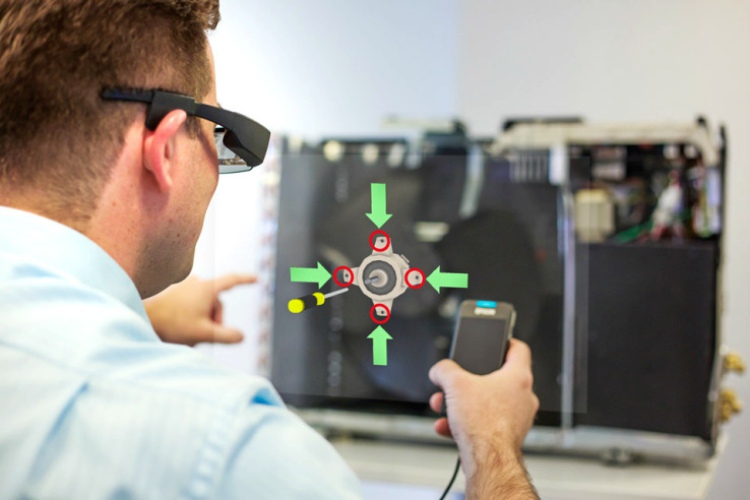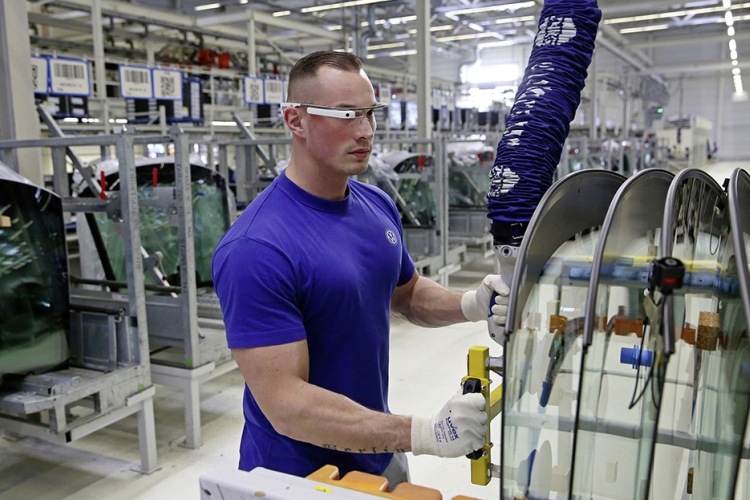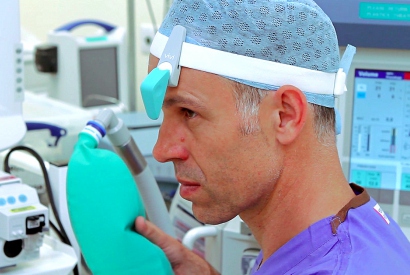 While much of the hype around augmented reality (AR) and wearable devices is focused on consumer technology, a new report predicts that enterprise AR applications will also drive big growth for those technologies over the next five years. Retail, manufacturing, logistics, and healthcare are some of the most dynamic markets for enterprise AR and wearables.
While much of the hype around augmented reality (AR) and wearable devices is focused on consumer technology, a new report predicts that enterprise AR applications will also drive big growth for those technologies over the next five years. Retail, manufacturing, logistics, and healthcare are some of the most dynamic markets for enterprise AR and wearables.
Enterprise AR applications and wearable devices are already helping warehouse workers, remote field technicians, and even surgeons. The technologies make it possible for these professionals and other workers to access and interact hands-free with information that’s location-aware and highly targeted.
Big companies banking on wearable AR
The Beecham Research report on enterprise AR and wearable tech also points to the growing activity and consolidation in that market. Examples include PTC’s $65 million purchase Vuforia at the end of 2015 to develop new manufacturing applications, as well as acquisitions of ThingWorx and Axeda–two companies focused on Internet of Things (IoT) applications.
 Other acquisitions in 2015: Facebook’s purchase of AR company Surreal Vision, and Apple’s purchase of Metaio, a German company born out of a project at Volkswagen. Apple is likely now working on integrating its AR technology for use in future phones and tablets–and possibly a virtual reality (VR) headset for which Apple won a patent a year ago.
Other acquisitions in 2015: Facebook’s purchase of AR company Surreal Vision, and Apple’s purchase of Metaio, a German company born out of a project at Volkswagen. Apple is likely now working on integrating its AR technology for use in future phones and tablets–and possibly a virtual reality (VR) headset for which Apple won a patent a year ago.
Current & future enterprise AR uses
“The enterprise AR and wearable technology market is at a tipping point, moving from trials and test bed projects to commercial deployments,” says Beecham’s Matthew Duke-Woolley, who authored the report. “Business-use cases…will gain pace over the next two years with more products, real-world deployments and market acquisitions.”
 Just some of the many emerging enterprise AR and wearable technology applications and devices to look out for are: heads-up displays to support complex manufacturing processes, collaborative product design and prototyping; remote assistance of specialist distant engineers and technicians; non-distracting medical systems to enable surgeons to access relevant data during operations; and education and training. (All of these are covered in the report.)
Just some of the many emerging enterprise AR and wearable technology applications and devices to look out for are: heads-up displays to support complex manufacturing processes, collaborative product design and prototyping; remote assistance of specialist distant engineers and technicians; non-distracting medical systems to enable surgeons to access relevant data during operations; and education and training. (All of these are covered in the report.)
Beecham also expects to see rapid evolution are less-obtrusive smart glasses with better field of view and battery life. The research firm also expects to see increasing attention on the convergence with virtual reality technology, and the importance of increased collaboration with AR/VR and IoT players.
“If companies quickly recognize the benefits and return on investment [of AR and wearables], we believe the market can reach just under $800 million by 2020,” says Matthew Duke-Woolley.
You can read the full report here on Beecham’s website. The company also has an interesting illustrated chart of various business and consumer uses of wearable technology.




